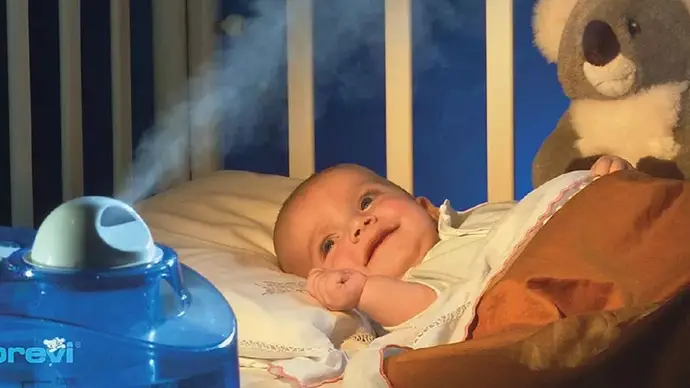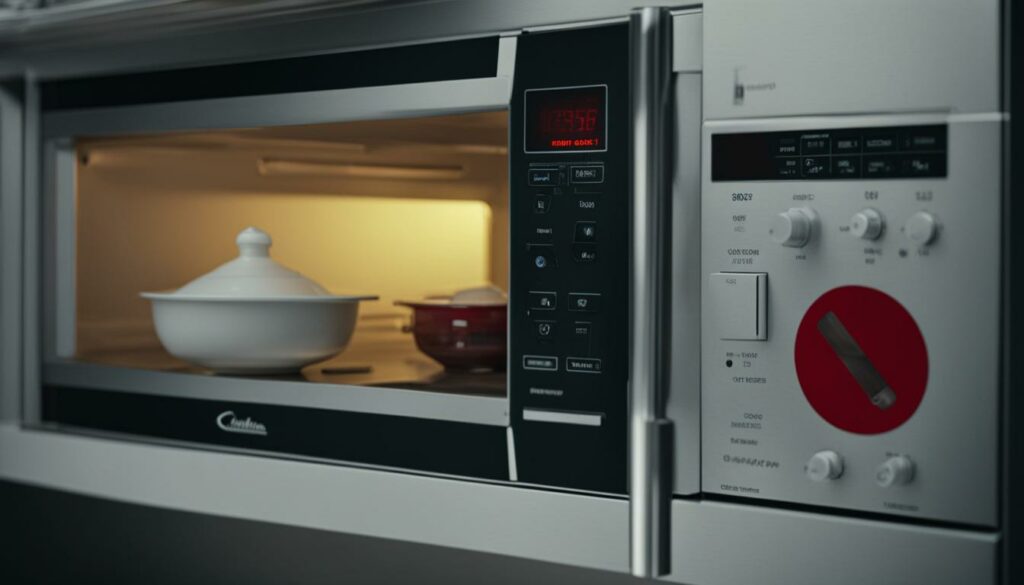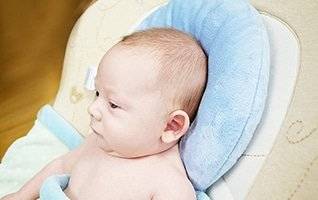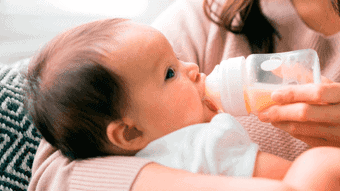As a parent, your first priority is the health and safety of your baby. One important aspect of that is ensuring that their feeding items are clean and free from mold. Mold in baby bottles can pose health risks to your little one, so it’s essential to take steps to prevent and address it.
In this section, we’ll discuss what to do if you discover mold in your baby’s bottle. We’ll go over how to recognize mold in baby bottles, how to clean and sanitize moldy bottles, when to throw away contaminated bottles, and how to prevent future mold growth.
Key Takeaways:
- Mold in baby bottles can pose serious health risks to your baby.
- You should regularly inspect your baby’s feeding items to check for mold.
- If you find mold in a baby bottle, clean and sanitize it properly to eliminate any health risks.
- There are instances when it’s best to throw away baby bottles contaminated with mold.
- Taking preventive measures can help you avoid mold growth in baby bottles altogether.

Recognizing Mold in Baby Bottles
As a responsible parent, it’s vital to inspect your baby’s feeding items regularly for signs of mold. Mold can pose a risk to your baby’s health, so it’s essential to stay vigilant.
The following are some common signs that your baby bottle may have mold:
- The bottle appears cloudy or discolored
- There is a foul odor coming from the bottle, even after washing
- Black, green, or brown spots are visible on the inside of the bottle or on the nipple
If you notice any of these signs, it’s crucial to take immediate action to clean and sanitize the bottle properly before using it again.
Why Does Mold Grow in Baby Bottles?
Mold can grow in baby bottles because they provide the ideal environment for mold to thrive: warmth, moisture, and food sources. Milk residue left in bottles after feeding can provide the nutrients that mold needs to grow.
To prevent mold growth in your baby’s bottles, make sure to clean them thoroughly after each use and let them dry completely. Avoid leaving bottles sitting with stagnant water or milk residue for extended periods.
How Often Should You Inspect Baby Bottles for Mold?
It’s a good idea to inspect your baby’s bottles for mold every day. Mold can grow quickly, so catching it early can help prevent it from spreading and becoming a more significant health risk.
What to Do If You Find Mold in a Baby Bottle?
If you discover mold in a baby bottle, it’s essential to clean and sanitize it properly to eliminate any potential health risks. The following steps can help:
- Disassemble the bottle and rinse all parts with hot water.
- Soak the bottle and its parts in a solution of equal parts white vinegar and water for at least 30 minutes.
- Scrub the bottle and its parts with a bottle brush and hot, soapy water.
- Rinse all parts thoroughly with hot water and let them air dry completely.
- Sanitize the bottle and its parts by boiling them in water for at least five minutes or using a sterilizer.
If the mold persists after cleaning and sanitizing, it’s best to dispose of the bottle and purchase a new one to ensure your baby’s health and safety.
Cleaning and Sanitizing Moldy Baby Bottles
If you’ve discovered mold in your baby’s bottle, cleaning and sanitizing it properly is crucial to eliminate any potential health risks. Here are the steps to follow:
- First, discard any remaining liquid in the bottle and rinse it with hot water.
- Next, fill the bottle with equal parts of white vinegar and water. Let it sit for at least an hour, or overnight if the mold is severe.
- After soaking, empty the mixture and scrub the bottle with a bottle brush. Ensure that you reach all areas, including the bottom and the sides of the neck.
- Rinse the bottle thoroughly with hot water.
- Then, sanitize the bottle by boiling it for five minutes or using a sterilizer machine according to the manufacturer’s instructions.
- Once the bottle has been sterilized, let it air dry completely before using it again.
It’s also essential to clean any other parts of the baby bottle, such as the nipple and collar, using the same process outlined above. If any mold remains on the bottle despite the cleaning process, it’s best to discard the bottle and replace it with a new one.
Additional Tips for Cleaning Baby Bottles
- Wash baby bottles immediately after use to prevent the buildup of bacteria and mold.
- Always use a bottle brush to thoroughly clean inside the bottle.
- Use a dishwasher basket or place the bottles and parts on the top rack of the dishwasher for easy cleaning.
- Check the bottle’s nipple and collar regularly for signs of wear and tear and replace them as needed.
By following these tips and cleaning the baby bottle regularly, you can keep your baby healthy and safe. Remember, mold can pose serious health risks, so it’s essential to always stay vigilant and take prompt action if you discover mold in your baby’s bottles.
When to Throw Away Baby Bottles
While cleaning and sanitizing moldy baby bottles can eliminate the mold, there are some instances when it’s best to discard the bottle and start fresh. Here are some situations when you should throw away baby bottles:
- If the mold is severe and has spread throughout the bottle
- If the bottle is cracked or damaged – cracks can harbor bacteria that may be harmful to your baby
- If the bottle has been used for an extended period of time – it’s a good idea to replace bottles every few months to ensure they are functioning properly and not harboring harmful bacteria
Remember, your baby’s health is the top priority, so if you have any doubts about the safety of a baby bottle, it’s better to be safe and replace it.
Dealing with Moldy Nipples and Sippy Cups
If you’ve found mold in your baby bottle, it’s important to also check the nipples and sippy cups for any signs of mold. Moldy nipples and sippy cups can be just as dangerous as moldy bottles and should be addressed immediately.
When to Throw Away Baby Nipples
If you’ve tried cleaning the nipple with hot soapy water and the mold doesn’t come off, it’s time to throw it away. Additionally, if the nipple is cracked or shows signs of wear and tear, it’s time to replace it. Mold can hide in crevices and damage to the nipple can make it difficult to clean properly.
When to Throw Away Baby Sippy Cups
Similar to baby nipples, a moldy sippy cup should be discarded if efforts to clean it thoroughly have failed. Additionally, if the sippy cup has any cracks or other damage, it’s time to replace it. Mold can hide in tiny crevices and damage to the cup can make cleaning it properly a challenge.
Remember to regularly inspect your baby’s feeding items for any signs of mold and to be diligent with cleaning and sanitizing them. By taking these precautions, you can help ensure the health and safety of your little one.
Preventing Future Mold Growth in Baby Bottles
While discovering mold in your baby’s bottle can be alarming, there are steps you can take to prevent future growth and keep your baby’s feeding items safe and clean.
Here are some tips to prevent mold growth:
- Thorough cleaning: After each use, make sure to wash the bottle and all its parts with hot, soapy water. Use a bottle brush to reach all the nooks and crannies. Rinse thoroughly and let air dry. Don’t let the bottle sit with milk or formula residue for an extended period.
- Sanitizing: Once a day, sterilize the bottle and its parts. You can do this by boiling them for five minutes, using a steam sterilizer, or by following the instructions from the bottle manufacturer.
- Proper storage: Store the clean and dry bottles and parts in a dry, cool, and well-ventilated area. Avoid keeping them in a damp or humid place, such as the bathroom, where mold can thrive.
- Replace worn out bottles: If you notice any signs of wear or cracks on the bottles, it’s time to replace them. Old and worn out bottles can harbor bacteria and mold.
By following these preventive measures, you can minimize the chances of mold growth and ensure your baby’s feeding items remain safe and clean for use.
Other Considerations for Infant Feeding Items
While baby bottles are a crucial feeding item, there are other items in your baby’s feeding routine that require attention.
Utensils
Utensils such as spoons and forks should be washed with warm water and soap before and after every use. Rinse thoroughly and dry completely before storing. Depending on the material, you may need to hand wash or use the dishwasher. Be sure to read the manufacturer’s instructions.
Breast Pump Parts
If you use a breast pump, it’s essential to clean and sanitize the parts regularly. After each use, dismantle the pump and wash all parts in warm soapy water. Rinse thoroughly and let air dry. Once a day, sterilize the pump parts by boiling them in water for ten minutes. You can also use a sterilizer specifically designed for breast pump parts. Again, be sure to follow the manufacturer’s instructions.
Breast Milk Storage Bags
If you pump and store breast milk, invest in high-quality storage bags that are specifically designed for breast milk. Be sure to label each bag with the date and time of pumping to ensure correct rotation. Store bags flat in the freezer to maximize space and minimize the risk of leaks. When ready to use, thaw the milk in the refrigerator, or place the bag in a bowl of warm water. Never heat breast milk in the microwave, as it can destroy valuable nutrients.
By giving your baby’s feeding items the attention they require, you can ensure that they remain safe and free from harmful bacteria.
Conclusion
Caring for your baby’s feeding items is crucial for their overall health and safety. If you discover mold in your baby’s bottle, it’s important to address it promptly and properly to avoid any potential health risks. Remember to regularly inspect your baby’s feeding items for cleanliness and take preventive measures to avoid mold growth.
When cleaning and sanitizing moldy bottles, ensure that you follow the proper steps to eliminate any potential health risks. If the mold is too severe or the bottle has been contaminated for too long, it’s best to discard it and start fresh. The same goes for moldy nipples and sippy cups.
Remember, taking care of your baby’s feeding items doesn’t just stop at bottles. Other infant feeding items, such as pacifiers, utensils, and breast pump parts, also require proper cleaning and maintenance. By following these steps and taking the necessary precautions, you can maintain a safe feeding environment for your little one.




